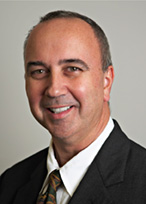
By Bobbie Fisher
Practically every school child knows that the discoverer of the x-ray was Wilhelm Roentgen, more than 120 years ago. They may not know that within a year of publishing his discovery, Roentgen saw x-rays being used in diagnosis and therapy, as an established part of medical practice – earning the German physicist the title of Father of Diagnostic Radiology, as well as an honorary medical degree and the first Nobel Prize in Physics.

Discoveries followed at a rapid pace, as physicists and researchers built on Roentgen’s work, marking every ensuing decade as one of innovation and application. It’s no less true in the first decade and-a-half of the 21st Century, and it’s nowhere more evident than in Hampton Roads. The area’s radiologists, whether diagnostic, therapeutic or interventional, are early adopters of the most recent technological and scientific advances, and especially excited about the promise these innovations hold for the future.
Herewith five area specialists talk about some of the recent trends and advances in their particular fields, and how those fields can overlap.

Diagnostic Radiology.
“For the first 70 years of radiology, everything was more or less x-ray based,” says Jeffrey A. VandeSand, MD, a diagnostic radiologist with Tidewater Physicians Multispecialty Group. “A short time after Roentgen’s discovery, Edison developed fluoroscopy, but it wasn’t until about 30 or 40 years ago, that there was a sort of renaissance, where CT, MRI and ultrasound were developed, and those three modalities were quickly incorporated into our toolkit.” Over the past 30 years, since the 1980s, the advances in these modalities have been in the form of refining.

“Today, we’re moving toward more of a merger between radiology and pathology,” Dr. VandeSand says. “We’re starting to move away from just imaging the anatomy of the body, and starting to incorporate more looking at tissue specific – things like perfusion, how tissues receive blood flow and how the blood interacts with those tissues. Another technique, diffusion, looks at how water molecules through through different tissues.”
Traditionally, much of the imaging of the brain has been looking just at the anatomy. “We’d see a mass in the brain and say it was probably a tumor, or a potential tumor,” Dr. VandeSand says. “Now we’re able to look at the anatomy of the tissue; but using MRI, we can also use these techniques – diffusion, perfusion and others – to better characterize what we see.”

Diffusion imaging has traditionally been used in the brain to look at things like stroke or tumors, but diagnostic radiologists are now starting to use it in different parts of the body as well, and in other organs like the kidneys, the liver and the prostate.
“As radiologists, we’re always excited about any kind of new imaging,” says Salvador Trinidad, MD, Chairman of Radiology at Chesapeake Regional Healthcare. “One of the biggest changes we’ve recently incorporated is 3D mammography, or tomosynthesis, which has been shown to increase the incidence of early detection by as much as 35 percent. And nearly equally as important to patients is the reduction in false positive findings, eliminating the need for callbacks and the anxiety that accompany them.

“We’re introducing a new technique that will also relieve some of the anxiety women feel in the early diagnostic stages of breast cancer,” Dr. Trinidad explains. “Typically, after a positive biopsy, in order for the area to be removed surgically, this area had to be localized by a guide wire prior to surgical removal. Both localization and surgery are done in the same day, which prolongs the day for the patient.”
“The Savi Scout® uses non-radioactive, electromagnetic wave technology to detect a sensor that we place into the patient’s breast as much as a week before surgery biopsy,” Dr. Trinidad explains. “The system gives surgeons a precise way to locate the sensor and thus, the tissue targeted for removal during lumpectomy/excisional biopsy procedures.” But now, the procedure can be done on two different days, maximizing convenience for both the patient and surgeon. It can eliminate surgical delays, improve patient satisfaction and optimize surgical planning.
Dr. Trinidad is also excited about the recent acquisition of a 256-slice CT scanner. With this new technology, 256 slices are created with every rotation, “so we can scan the whole chest in only a matter of seconds.” He equates the technology to the wand Dr. McCoy used to wave over his patients aboard the Enterprise, but adds, seriously, “We use it for our arteriography, such as to rule out pulmonary emboli in the lung and cornering arteriography, where we want to stop the heart motion so we can see the vessels clearly. It’s a game changer in terms of cardiac imaging.”
“Advancements in technology have definitely improved diagnostic testing for the patient,” says Dennie T. Bartol, MD, Medical Director for Radiology at the Riverside Health System’s regional campus. An interventional radiologist, Dr. Bartol notes that both diagnostic and interventional radiology are evolving and changing, and in some cases, overlapping.
Interventional Radiology.
Dr. Bartol explains: “It used to be that if patients had problems with hypertension and needed to have their kidneys evaluated, or if they had blue toe and needed their legs evaluated, or having problems with TIA and needed their necks evaluated, we’d send them for a Doppler ultrasound, and then progress to an arteriogram. We’d stick a needle in the artery, take several images until we had what we needed, and then hold pressure on the leg. It could take as much as four to six hours from check-in to prep to procedure to recovery and discharge.” Today, he says, with CTA or MRA, the patient goes into the scanner, contrast is injected, and the images are processed, evaluated and reconstructed – and “we basically have a recapitulation of the arterial tree, based solely on the contrast injection, for a much smaller commitment of time for the patient.”
Whereas Dr. Bartol used to do as many as eight diagnostic carotid arteriorgrams a week, that procedure is virtually a thing of the past. “The technology has simplified the process for both the physician and the patient,” he says.
“This is definitely an exciting time in interventional radiology,” says Dmitri E. Samoilov, MD, who practices with Medical Center Radiologists. “The biggest development in interventional radiology is interventional oncology.” Interventional oncology is more specific for the delivery of therapy in a very precise fashion, directly where the cancer is located. The greatest advances in the targeted tumor therapies have developed in the liver predominantly.
“If a patient has either a primary cancer of the liver or metastatic disease that has spread to the liver, we now have techniques that allow us to deliver chemotherapy or radiotherapy using the pathways of the blood vessels, directly where tumors are,” Dr. Samoilov explains. “It’s done with image guidance, basically eliminating surgery. It allows us to control primary or metastatic liver disease locally, therefore prolonging the patient’s survival, downstaging disease for resection or bridging the patient to transplantation.”
It requires quite a lot of effort on the part of medical oncologists or transplant physicians, because some of these tumors are either nonresponsive or not amenable to systemic therapy. For hepatocellular carcinoma, Dr. Samoilov adds, targeted therapy is sometimes the only option for patients, given significant tumor burden combined with advanced chronic liver disease.
The current guidelines for transplantation require that the tumor has to be completely treated. “We can’t transplant a patient in the US today unless the tumor has been treated,” Dr. Samoilov notes, “and if there’s still active disease in the liver, we can’t transplant because of the very high incidence of recurrence. So these are life and death situations.”
The above example is just the tip of the iceberg of what is possible. More targeted therapies are currently in development; for example, non-surgical treatment of benign prostatic hypertrophy is gaining a momentum in the US.
“We’re extending these patients’ lives, and enhancing the quality of their lives,” he says.
Therapeutic Radiology
Dr. Mark Sinesi, MD, a radiation oncologist at Eastern Virginia Medical School, agrees. Also known as therapeutic radiology, radiation oncology uses radiation to control cancer in collaboration with diagnostic radiologists and interventional radiologists. “A stunning example of our collaboration is selective internal radiation, or SIRT,” says Dr. Sinesi.
For patients whose cancers originated in or metastasized to the liver, and for whom surgery is not an option, SIRT provides an extra opportunity for extending life and quality of life. “These tumors represent the type of disease normally treated with chemotherapy,” Dr. Sinesi explains, “and when that happens, the malignant burden in these patients’ bodies is decreased and they may go off chemotherapy. Then the cancer starts growing back, and they may go back on chemo and again enjoy some improvement, but that’s at the cost of some side effects. And after two or three cycles of that, these patients are worn out; their bone marrow is worn out and they’re ready for hospice.”
Dr. Sinesi doesn’t advocate vigorous, toxic therapy in a futile attempt to cure what cannot be cured. “Rather,” he says, “with SIRT, we offer gentle treatment that serves to enhance quantity and quality of life, a very minimal side-effect type of treatment that causes symptoms to go away and lets our patients enjoy a better quality of life. We can give them a high performance status for as long as possible, to make every day as good as it can be.”
With his colleagues in diagnostic and interventional radiology, “We do a contrast study to see where the tumor or tumors are in the liver, and then we inject radioactive microspheres directly into the tumor,” Dr. Sinesi explains. “These are very tiny glass or plastic resin spheres – so small that the bottle containing this medicine looks like a bottle of smoke.” The microspheres block off the blood vessel that feeds the cancer(s), and at the same time, allows the radioactive component to focus on the mass(es). It’s a well tolerated treatment, requiring only overnight stay in the hospital. “It’s not a permanent cure for many of these patients,” Dr. Sinesi notes, “but it offers them more functionality and quality during the life they have left.”
What lies ahead – radiology in the 21st Century.
“These technologies are just the tip of the iceberg,” Dr. Samoilov says. “For patients with cancer who requires staging or tissue diagnosis, we can perform an image-guided biopsy by either CT or ultrasound,” he says. In addition, interventional radiologists are placing ports in patients for the delivery of embolic and/or therapeutic agents, without the necessity of general anesthesia and without significant complication, reducing the burden of travel for these patients as well as their stress levels.
“Evolving technologies like ultrasound elastography allow us to look not just at anatomy and blood flow, but also the stiffness of the tissue, which is especially helpful when dealing with certain diseases,” Dr. VandeSand notes. “About 15 years ago, the idea of PET-CT was incorporated into radiology, overlaying the metabolism we get from PET with the anatomy we get from CT. That’s helping us differentiate between a tumor and an infection or other process. Now we’re starting to move beyond that, and incorporating PET-MRI. MRI often has the potential to provide more biological and functional data than CT, and thus the PET and MRI images allow us to get an even more accurate picture of the disease process.”
“We’re working with 3T MRI now,” says Dr. Trinidad. “It’s still pretty much the sweet spot. But we’re looking at still higher field strength magnets now, and in five or 10 years, magnets may well be developed that will image the body even better.” And he notes that while the Savi Scout system was approved by the FDA only last January, the manufacturer believes that the same technology will have application in areas besides the breast: “This is really just the beginning for this technology.”
“We’re instituting a new way of giving accelerated partial breast irradiation,” says Dr. Sinesi. “It’s a shortened course of radiation that doesn’t require implantation in the breast itself, through a procedure similar to mammography. It’s gentle compression of the breast that directs the radiation beam directly on the surgical bed. It’s an entirely non-invasive procedure.”
Another innovation for cancer patients is a treatment for retinal melanoma: a radioactive implant that is sutured onto the back of the eye, to stay there for a specified number of days before being removed after it delivers radiation directly to the retina. The implant, essentially a small gold plaque, is designed by the radiation oncologist, Dr. Sinesi explains, and then placed by a retinal surgeon.
“Thirty-five or forty years ago, no radiologist of any subspecialty could have envisioned how precise MRI and CT images would be within just a few years. “It’s hard to predict,” says Dr. VandeSand. “A lot of it is going to be refining the techniques we already have.
One such refinement is in phase-contrast x-ray imaging (PCI), which gives us a new way to use x-rays. It’s based on the refraction or bending of x-rays as they pass through tissues in the body, rather than the simple absorption that traditional x-ray exams are based on. PCI results in images with greatly improved soft tissue contrast, and although its clinical use is not currently widespread, it may hold future potential in the imaging of soft tissue, including of the breast.”
“We haven’t begun to see the tip of the advancing technological iceberg in radiology,” Dr. Bartol says. “There are so many things that have been developed that have eliminated or superseded the need for surgery, or that are supplementing surgical needs. More are being imagined and explored every day.”
In fact, Dr. Bartol notes, at the last interventional radiology meeting he attended, one of the papers presented involved an innovative approach to weight loss surgery. “The interventional radiologist had gone in and embolized the left gastric arteries of a handful of patients, who then had incredible success at losing weight. It’s not going to happen right away,” Dr. Bartol emphasizes, “but he was pushing for a multicenter trial to look at this as an option. It could certainly complement or even serve as the first line methodology for difficult patients.” And of course, the work being done in neurointerventional radiology is helping reduce the risk of invasive surgical procedures on the brain. Rather than having to undergo brain surgery, many patients are being treated with vascular surgery, easing their stress substantially.”
Every day is a process of discovery when dealing with people’s lives.
Like their colleagues in radiology practices all across Greater Hampton Roads, these subspecialists remain enthusiastic about their chosen fields, and excited by the ever increasing and innovative opportunities they see every day in their ability to identify diseases and treat their patients.

